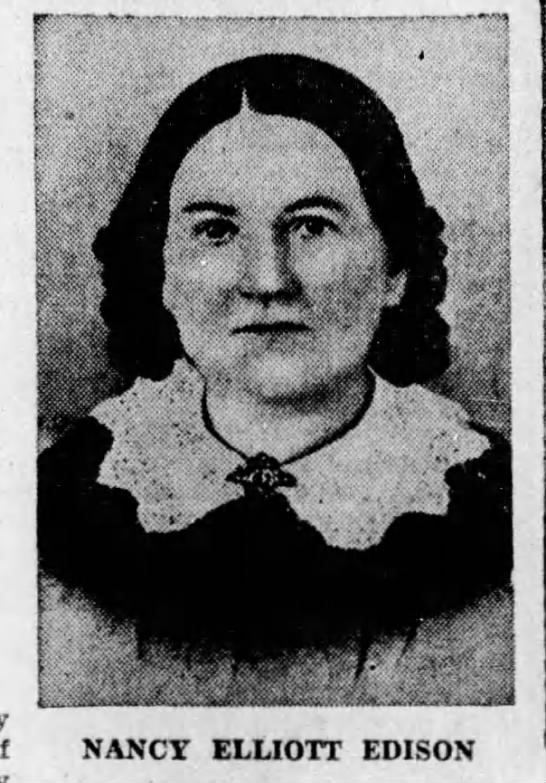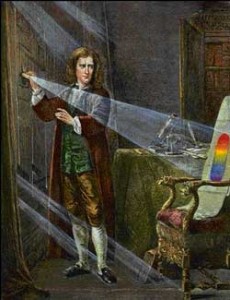原名: 理科はどうやったらできるようになるのか?
上の画像はフラウンホーファー線という。光を七色に分解すると、元素の影が七色の中に線となって現れる。これを発見したヨゼフ・フォン・フラウンホーファーは10年かけてこの線を描いた。いまでは地球に届く星の光の中からフラウンホーファー線を分析することで、その星に多く含まれる元素を割り出すことに役立てられている。フラウンホーファーの功績は科学的な偉業だが、彼が10年かけて描いた線は芸術と科学を分かつ境界を曖昧にし、もはや美術品の粋に到達している。
保護者が塾に多く寄せる相談のひとつに「うちは文系だから子どもに理系の勉強が教えられない」という悩みがあるという。文部科学省の『学校基本調査』によると、人口比で見る文系と理系の割合は、文系7割:理系3割。確かに文系は多く、理系は少ない。
20世紀の偉大な発明家トーマス・エジソンは、学校に馴染めず3ヵ月で退学し、代わりに母親が家で勉強を教えた。電球を発明し、蒸気機関をコンパクトにして自動車の基礎を作り、蓄音機を生み出した天才の子ども時代は、この母親ナンシー・エジソンの影響なのだ。
ではナンシーは天才科学者だったかというと、別にふつうの知識を持つ、ふつうの母親だった。別に科学のエキスパートでなくても、子どもの理科力を伸ばすことはできるのだ。
理科の勉強は簡単だ、と謳う参考書や受験指南書を読むと、こんなことが書いてある。
「暗記が大半だから成績を伸ばすのは簡単」
「正しく勉強さえできればいい結果が出る」
「1冊の問題集を買ってがっちり解いて解いて解きまくる」
…それができないから成績が伸び悩んでるというのに、身もふたもないアドバイスと言わざるを得ない。
大人になってから、小さい頃にどんな理科の授業を受けたのか思い出すと、面白いことをわざとつまらなく教わったような気がしてならない授業がたくさんあった気がしてならない。
例えば、なぜ虹ができるのか、説明できない「文系の親」は多い。光は7つの色に分かれることを小学校で習わないからだ。説明を受けた記憶はあっても、原理を面白く学ぶ機会を得られなかったせいで、うろ憶えのまま大人になってしまったのだ。
いっぽうイギリスでは、イングランドの偉大な科学者アイザック・ニュートンの歴史を紐解きつつ、光のプリズムを授業で使い、暗室に導かれたひと筋の光がプリズムの中で7つの色に分かれる仕組みを学ぶ。おかげで大半の子は、大人になっても虹の仕組みが説明できる。イギリスの詩人ジョン・キーツが「ニュートンが虹を解体したおかげで虹の神秘は失われた」と言ったが、なかなかどうして、虹はいまだに私たちの心をとらえ、神秘を失ったどころか、ますます神秘的な輝きを増している。
受験で勉強する理科の延長線に何があるのか、ちょっと教わるだけで、飛躍的に成績が伸びた子がいた。元素記号表が憶えられず、水兵リーベの例の歌さえ憶えられなかった子だった。
ところがある日、水素原子が圧縮されてヘリウム元素が生まれる、と話したところ、目の輝きが変わった。さらに、元素記号表の数字は見つかった順番ではなく宇宙で生まれた順番に近いと話すと、ますます目が輝いた。次の週には、太陽が光るのは水素とヘリウムが常に燃えているからだ(核融合)と、彼が教えてくれさえした。そこで、人力で水素原子からヘリウム原子を作ろうとすると、50兆キロワットの電力から数百万℃の温度で熱してようやく2~3粒のヘリウム原子ができる、と教えたところ、もう次の週には、同じ方法で金(Au)を生み出すこともできるが、10兆円の予算を使って1グラム作れることをマンガで読んだ、と教えてくれた(このマンガは『決してマネしないでください』という)。
この子との交流を通じて痛感したのは、どんなに立派な参考書より、好奇心の扉が開くほうが、はるかに簡単に成績が伸びることだった。つまらない原理原則の押しつけでは開かなかった好奇心の扉が、物質の誕生という不思議に満ちた世界を垣間見ることで一気に解き放たれる。理科は暗記が大半で、あとは計算の応用だけだから簡単だ…と教えるだけの受験対策では、子どもたちは本当に理科を学んだことにはならないだろう。
小学館や学研の学習マンガは勉強のサプリメントのようなものだ。よこたとくおのマンガなどで受験勉強以外の雑学や学者たちの功績などを積極的に学ぶべきなのは、いつ開くかわからない子どもたちの好奇心の扉を、こちょこちょとくすぐる機会が、学校教育に不足しているからだ。また、子どもの好奇心を妨げないこと、好奇心を伸ばすことなら、きっと文系の親でもできるだろう。未来の見えてくる勉強法、それが理科ができるようになる、一番の勉強法ではないだろうか。
【2024年4月加筆】
[Updated April 2024]
科学を学ぶための方法やアプローチについて、さらに深く掘り下げてみましょう。科学の学習は、単なる暗記や計算の応用だけではなく、好奇心を刺激し、探求心を育むことが重要です。以下に、科学を効果的に学ぶための具体的な方法や最新の情報を交えてご紹介します。
### 科学の学習方法
#### 1. 好奇心を刺激する
科学の学習において最も重要なのは、好奇心を持つことです。子供たちが自然現象や科学的な謎に興味を持つようにするためには、日常生活の中で科学を感じさせる工夫が必要です。例えば、虹がどのようにしてできるのかを説明する際には、実際にプリズムを使って光を分解してみせるといった実験を行うことが効果的です。
#### 2. 実験と観察
科学は実験と観察を通じて学ぶことができます。学校の授業だけでなく、家庭でも簡単な実験を行うことで、子供たちの理解を深めることができます。例えば、植物の成長を観察するために、種を植えて毎日観察日記をつけるといった活動が考えられます。
#### 3. 科学的な思考法を身につける
科学的な思考法を身につけることも重要です。これは、仮説を立てて実験を行い、結果を分析して結論を導き出すプロセスです。このプロセスを繰り返すことで、論理的な思考力が養われます。
#### 4. 最新の科学情報を活用する
科学は常に進化しています。最新の科学情報を取り入れることで、学習内容をより現代的で興味深いものにすることができます。例えば、2024年4月時点の最新情報として、新型コロナウイルス感染症(COVID-19)の発生状況や対策についての情報を取り入れることが考えられます。
### 科学教育の現状と課題
#### 1. 科学教育の現状
日本の科学教育は、基礎的な知識の習得に重点を置いていますが、実験や観察を通じた体験的な学習が不足しているという指摘があります。特に、小学校や中学校では、理論的な説明に偏りがちで、子供たちが実際に手を動かして学ぶ機会が少ないとされています。
#### 2. 科学教育の課題
科学教育の課題としては、以下の点が挙げられます。
- **実験設備の不足**: 学校によっては、実験設備が十分に整っていない場合があります。これにより、実験を通じた学習が制限されることがあります。
- **教員の専門知識の不足**: 科学の専門知識を持つ教員が不足しているため、質の高い科学教育が提供されにくい状況があります。
- **学習意欲の低下**: 子供たちが科学に対して興味を持たない場合、学習意欲が低下し、成績が伸び悩むことがあります。
### 科学教育の改善策
#### 1. 実験設備の充実
科学教育を充実させるためには、実験設備の整備が不可欠です。学校や地域の支援を受けて、実験器具や教材を充実させることが求められます。
#### 2. 教員の専門知識の向上
教員の専門知識を向上させるためには、研修やセミナーの開催が効果的です。また、科学の専門家を招いて講演を行うなど、教員が最新の科学情報を学ぶ機会を提供することも重要です。
#### 3. 学習意欲の向上
子供たちの学習意欲を向上させるためには、興味を引く授業内容や教材を工夫することが必要です。例えば、科学の歴史や偉人のエピソードを紹介することで、子供たちの興味を引きつけることができます。また、科学に関連するイベントやコンテストに参加することで、実践的な学びの場を提供することも効果的です。
### 最新の科学情報の活用
#### 1. 新型コロナウイルス感染症(COVID-19)の最新情報
2024年4月時点での新型コロナウイルス感染症(COVID-19)の発生状況や対策についての最新情報を活用することで、科学の学習内容を現代的で実践的なものにすることができます。例えば、感染症の拡大防止策やワクチンの開発状況について学ぶことで、科学の重要性を実感することができます。
#### 2. 環境問題と持続可能な開発
環境問題や持続可能な開発についての最新情報を取り入れることで、子供たちに地球環境の保護や持続可能な社会の実現について考えさせることができます。例えば、気候変動や再生可能エネルギーの利用について学ぶことで、科学の知識を実生活に応用する力を養うことができます。
### まとめ
科学を学ぶためには、好奇心を刺激し、実験や観察を通じて体験的に学ぶことが重要です。また、最新の科学情報を取り入れることで、学習内容を現代的で興味深いものにすることができます。科学教育の現状と課題を踏まえ、実験設備の充実や教員の専門知識の向上、学習意欲の向上を図ることで、より質の高い科学教育を提供することが求められます。
科学の学びは、単なる知識の習得にとどまらず、論理的思考力や問題解決能力を養うための重要な手段です。これからの時代を生き抜くために、科学の学びを深めていきましょう。
written by ダーウィソ
オリジナル投稿:2019年4月19日




エジソンのエピソードは知っていました。学校に馴染めなかった偉人は結構いそうです。
返信削除